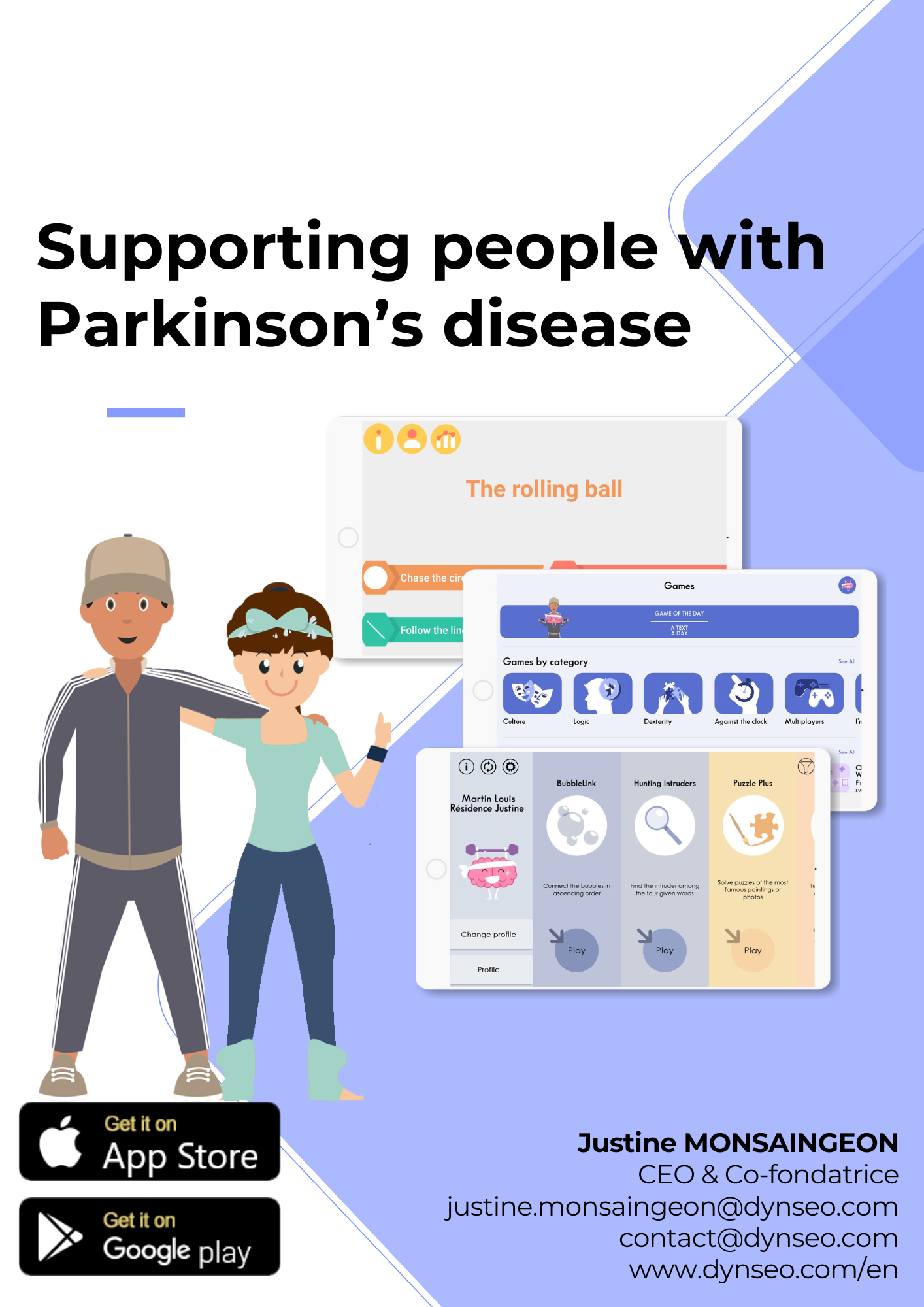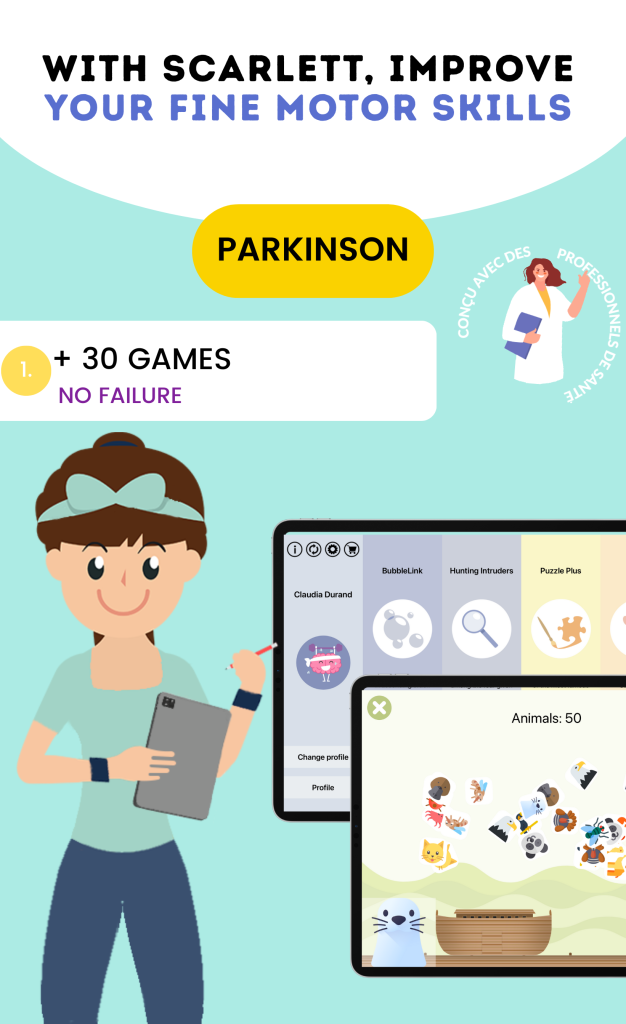During our training on the care of individuals with Parkinson’s disease, we learned to identify the unique needs of these individuals. Parkinson’s disease affects not only motor skills but also cognitive and emotional functions. It is essential for us, as caregivers, to understand that each patient is different and that their needs can vary significantly.
For example, some may experience difficulties moving, while others may need increased emotional support. We also discovered the importance of a personalized approach. By taking the time to listen to patients and understand their concerns, we can better meet their needs.
This includes recognizing signs of distress or anxiety, which can often be exacerbated by the disease. By being attentive and empathetic, we can create an environment where patients feel safe and supported.
Summary
- Understanding the specific needs of individuals with Parkinson’s disease
- Adapting the home environment to facilitate mobility and safety
- Learning effective communication techniques to assist individuals with Parkinson’s disease
- Encouraging autonomy while providing appropriate support
- Using tools and technical aids to facilitate daily activities
Adapting the Home Environment to Facilitate Mobility and Safety
Adapting the home environment is crucial to ensure the safety and comfort of individuals with Parkinson’s disease. During our training, we learned to identify necessary modifications to minimize fall risks and facilitate mobility. For example, it is recommended to eliminate obstacles in hallways and install grab bars in bathrooms.
We also discussed the importance of adequate lighting. Good lighting can help prevent accidents and improve visibility, which is particularly important for individuals with coordination issues. By creating a safe and accessible environment, we can help patients move more easily and maintain their independence.
Room-by-Room Specific Adaptations
Beyond general principles, we learned to evaluate each room in detail. In the bedroom, it is recommended to install an adjustable-height bed to facilitate transfers, as well as stable nightstands with easily accessible lamps. Using slippery fabric sheets can also help during nighttime position changes.
In the kitchen, organization is paramount. Frequently used utensils and foods should be placed at accessible heights to avoid excessive bending or stretching movements. Non-slip flooring is essential, particularly in areas likely to become wet.
Managing Thresholds and Stairs
Door thresholds often represent significant obstacles for people with Parkinson’s due to the “freezing” phenomenon (motor blocking). We learned to identify these high-risk areas and propose solutions such as low-incline ramps or complete threshold removal when possible. For stairs, installing handrails on both sides and adding contrasting non-slip strips on each step can greatly improve safety.
Learning Effective Communication Techniques to Assist Individuals with Parkinson’s Disease
Communicating with individuals with Parkinson’s disease can sometimes be a challenge due to speech disorders and cognitive difficulties. During our training, we explored various techniques to improve our communication with these patients. For example, it is essential to speak slowly and clearly, using short and simple sentences.
We also learned to be attentive to non-verbal signals. Facial expressions and body language can provide valuable clues about the patient’s emotional state. By being attentive to these signals, we can better understand their needs and desires, even when words are not easily expressed.
Adapting to Speech Disorders (Dysarthria)
Parkinsonian dysarthria often manifests as a monotonous, weak voice that is sometimes difficult to understand. We learned never to finish sentences for the patient, even if it takes time, as this can be perceived as disrespectful and discouraging. It is better to maintain eye contact, position ourselves at the same height as the person, and give them all the time necessary to express themselves.
Using Visual and Written Supports
To facilitate communication, we discovered the usefulness of communication boards, pictograms, or even simple notebooks where the person can write or point to words. These tools are particularly valuable during moments when speech becomes too tiring or incomprehensible. Voice synthesis applications on tablets can also serve as a temporary alternative during periods of verbal blocking.
Understanding and Responding to Cognitive Impairments
Parkinson’s disease can affect executive functions such as planning and decision-making. We learned to structure our questions simply, offering limited choices rather than overly complex open-ended questions. For example, instead of asking “What do you want to do today?”, it is more effective to propose “Would you prefer to read or listen to music?”. This approach reduces anxiety and facilitates decision-making.
Encouraging Autonomy While Providing Appropriate Support
Encouraging the autonomy of individuals with Parkinson’s disease is a fundamental aspect of our role as caregivers. We learned that even though these patients may need help with certain tasks, it is important to allow them to make decisions regarding their daily lives. For example, giving them the choice between different meals or activities can enhance their sense of autonomy.
However, it is also crucial to offer appropriate support when needed. We must be attentive to the moments when they need help without being intrusive. By finding this delicate balance between autonomy and support, we can help patients maintain their dignity and quality of life.
The Concept of Graduated Assistance
We were trained in the principle of graduated assistance, which consists of intervening only when necessary and at the minimum required level. For example, during dressing, rather than doing it for the person, we can start with verbal encouragement, then move to gestural guidance, and finally to partial physical assistance only if the other levels prove insufficient. This approach preserves existing abilities and prevents premature dependence.
Promoting Informed Decision-Making
Autonomy also involves access to information. We learned to clearly explain the implications of each choice without influencing the person’s decision. Whether it concerns meal times, participation in activities, or even medical decisions, the patient must have all the necessary information to make informed choices. Our role is to facilitate this understanding while respecting their preferences.
Recognizing and Respecting Moments of Refusal
Sometimes, a person with Parkinson’s may refuse help or an activity. We learned to distinguish between a refusal due to fatigue, anxiety, or a genuine personal choice. In all cases, it is essential to respect this initial refusal, seek to understand the reason, and propose alternatives rather than insisting. This attitude reinforces the person’s sense of control and respect.
Using Tools and Technical Aids to Facilitate Daily Activities
During our training, we discovered a variety of tools and technical aids that can greatly facilitate the daily activities of individuals with Parkinson’s disease. For example, adapted utensils with ergonomic handles can make meals easier to manage. Similarly, walking aids can improve mobility and reduce the risk of falls.
We also explored the use of modern technologies, such as tablet apps that offer cognitive games tailored for seniors. These tools are not only practical but can also stimulate the mental and social engagement of patients, which is essential for their overall well-being.
Technical Aids for Eating
Beyond ergonomic utensils, we discovered plates with raised edges that facilitate food capture, cups with handles and anti-spill systems, as well as non-slip placemats that stabilize dishes. For significant tremors, utensils with gyroscopic suspension can make a considerable difference in maintaining eating independence.
Mobility Assistance Technologies
Walking aids must be carefully selected according to individual needs. Wheeled walkers with brakes are often preferable to canes for people with Parkinson’s, as they offer better stability and can serve as support during freezing episodes. Some models are equipped with laser beams on the floor that help trigger movement during motor blockages.
Apps and Connected Devices
We explored various medication reminder applications that send audible and visual alerts at dosing times. Smartwatches can also detect falls and automatically alert relatives or emergency services. Domestic voice assistants allow control of lighting, temperature, and even making calls without physical manipulation, which is particularly useful during periods of significant rigidity.
Clothing Adaptations
Clothes with Velcro or magnetic closures advantageously replace traditional buttons that are difficult to manipulate. Shoes with Velcro or elastic systems facilitate dressing and undressing. We also learned about the existence of sock aids and long-handled shoehorns that allow maintaining independence in these daily gestures.
Adapting Household Tasks and Daily Activities According to the Abilities of the Individual with Parkinson’s Disease
Adapting household tasks to the abilities of individuals with Parkinson’s disease is a skill we developed during our training. We learned to assess the individual capabilities of patients and adjust tasks accordingly. For example, instead of asking a patient to do the entire cleaning, we can assign them simpler and less tiring tasks.
It is also important to encourage the active participation of patients in these adapted tasks. This can enhance their sense of accomplishment and motivation. By allowing them to contribute to their home environment while considering their limitations, we promote their physical and emotional well-being.
Breaking Down Complex Tasks
We learned the technique of breaking down tasks into simple, sequential steps. For example, for meal preparation, instead of asking “Can you prepare dinner?”, we break it down: first take out the ingredients, then wash them, next cut them, and finally cook them. This approach allows maintaining engagement while avoiding cognitive and physical overload.
Planning According to Motor Fluctuations
Parkinson’s disease is often characterized by motor fluctuations throughout the day, with “ON” periods (when medications are effective) and “OFF” periods (when symptoms are more pronounced). We learned to identify these cycles and plan the most demanding activities during ON periods, while reserving light tasks or rest times for OFF periods.
Activity Rotation and Prevention of Monotony
To maintain motivation and prevent boredom, we developed skills in activity rotation. Alternating between light physical tasks, cognitive activities, and moments of socialization helps maintain engagement without causing excessive fatigue in any particular domain. This variety stimulates different functions and maintains the person’s interest.
Valuing Contributions
Every contribution, however minimal, deserves to be recognized and valued. We learned to formulate specific positive feedback: rather than simply saying “Well done”, we can say “Thank you for folding these towels, it really helps me and they are perfectly arranged”. This recognition reinforces self-esteem and encourages continued participation.
Learning to Recognize Signs of Fatigue and Manage Exhaustion Related to Parkinson’s Disease
Fatigue is a common symptom in individuals with Parkinson’s disease, and it is essential for us to learn to recognize its signs. During our training, we discussed the different types of fatigue that these patients may experience, whether physical or mental. By being attentive to early signs, such as irritability or decreased energy, we can intervene quickly to offer support.
We also explored strategies to manage exhaustion related to the disease. This includes encouraging regular breaks and establishing a pace that suits the patient. By integrating these practices into our daily approach, we can help prevent exhaustion and improve the quality of life of the individuals we support.
Distinguishing Between Parkinsonian Fatigue and Ordinary Fatigue
Parkinson’s-related fatigue is often more intense and less relieved by rest than ordinary fatigue. We learned that it can manifest suddenly and unpredictably, even after light activities. This fatigue can be aggravated by medications, sleep disturbances, or the constant effort required to compensate for motor symptoms. Recognizing this specificity allows us to adapt our expectations and support.
Early Signs of Fatigue to Monitor
Beyond the irritability mentioned, we learned to identify other subtle signs: increased tremors, further slowing of movements, growing concentration difficulties, social withdrawal, decreased facial expression (already limited), or increased somatic complaints. These indicators allow us to intervene before exhaustion becomes problematic.
Energy Conservation Strategies
We were trained in energy conservation techniques that include activity planning, using technical aids to reduce effort, alternating between sitting and standing positions, and prioritizing essential tasks. For example, sitting down to brush teeth or prepare vegetables can considerably reduce energy expenditure.
Importance of Micro-Breaks
We discovered that short breaks of 5 to 10 minutes every hour can be more effective than one long rest period. These micro-breaks allow partial recovery without disrupting the day’s rhythm. They can include breathing exercises, music listening, or simply a quiet moment.
Managing Cognitive Fatigue
Mental fatigue is often underestimated but can be as debilitating as physical fatigue. We learned to limit multiple simultaneous stimulations (television + conversation + activity), reduce distractions in the environment, and propose cognitive activities graduated according to the time of day. Light mental exercises in the morning, when the person is more alert, generally yield better results.
Encouraging Adapted Physical Activity to Maintain Mobility and Muscle Strength
Adapted physical activity plays a crucial role in maintaining mobility and muscle strength in individuals with Parkinson’s disease. During our training, we learned the importance of encouraging these patients to participate in regular exercises that match their abilities. Activities such as walking, yoga, or even specific exercises can contribute to improving their physical condition.
We also discussed the psychological benefits associated with regular exercise. Physical activity can not only strengthen the body but also improve mood and reduce stress. By integrating these elements into our overall approach, we can help patients stay active and engaged in their daily lives.
Parkinson’s-Specific Exercise Programs
We studied several exercise approaches specifically designed for Parkinson’s disease. The LSVT BIG method, for example, emphasizes movement amplification to counter the tendency toward gesture reduction. Tai chi exercises have demonstrated positive effects on balance and fall prevention. Dance, particularly tango, combines balance work, coordination, and cognitive stimulation while offering an enriching social aspect.
Balance and Coordination Exercises
Fall prevention requires regular balance work. We learned to supervise simple exercises such as standing on one foot (with support if necessary), walking in a straight heel-to-toe line, or performing weight transfers from one leg to another. These exercises should always be practiced in a secure environment, ideally with support nearby.
Stretching and Flexibility
The muscular rigidity characteristic of Parkinson’s requires daily stretching work. We were trained to guide gentle but regular stretches of all muscle groups, particularly emphasizing the neck, shoulders, and hips. These stretches are most effective during ON periods and should be held for 15 to 30 seconds without bouncing.
Aquatic Activities
Pool exercise offers unique advantages: water resistance allows effective muscular work while buoyancy reduces fall risk. We learned that adapted water aerobics can improve strength, flexibility, and endurance while being enjoyable and refreshing. Water temperature should be moderate (28-30°C) to avoid excessive fatigue.
Integrating Physical Activity into Daily Life
Beyond formal exercise sessions, we learned to encourage movement in daily activities: taking stairs rather than the elevator when safe, gardening in adapted positions, taking active breaks during sedentary tasks. These micro-activities contribute to mobility maintenance without requiring structured exercise sessions.
Motivation and Progress Tracking
To maintain engagement, we discovered the importance of setting realistic and measurable goals, and celebrating progress, however minimal. Using a tracking journal or app can help visualize evolution and reinforce motivation. Group activities also offer valuable social support that promotes regularity.
Establishing a Structured Daily Routine to Facilitate the Management of Parkinson’s Disease Symptoms
Establishing a structured daily routine is essential to help individuals with Parkinson’s disease manage their symptoms. During our training, we learned that predictability can reduce anxiety and improve the overall well-being of patients. By planning regular activities throughout the day, we can create a reassuring environment.
We also discussed the importance of including dedicated rest periods in this routine. By ensuring that patients have enough time to rest between activities, we can prevent exhaustion and promote better symptom management.
Time Structure of the Routine
We learned to develop routines that respect medication schedules and typical motor fluctuations. Waking should ideally occur at a fixed time, followed by the first medication dose, then a waiting period before morning activities to allow the treatment to take effect. Meals at regular times also help optimize medication absorption and maintain stable metabolism.
Flexibility Within Structure
While routine is important, we learned that it should not be rigid to the point of creating anxiety if disrupted. Some flexibility must be integrated to adapt to daily symptom variations. For example, if the person wakes up particularly fatigued, the morning routine can be adjusted accordingly, with lighter activities or a slightly delayed wake-up.
Synchronization with ON and OFF Periods
Strategic planning of activities according to ON and OFF periods is crucial. Tasks requiring the most coordination, energy, or concentration should be planned during ON periods. Rest, relaxation, or less demanding activities can be placed during OFF periods. This synchronization optimizes functional capacities throughout the day.
Transition Rituals
We discovered the importance of transition rituals between different activities. For example, a moment of deep breathing before moving from sitting to standing position, or a short walk between two sedentary activities. These rituals help prepare the body and mind for change, thus reducing anxiety and motor blockages.
Sleep Routine
Establishing a consistent sleep routine is particularly important as sleep disturbances are common in Parkinson’s disease. We learned to create a regular bedtime ritual: same bedtime, relaxing pre-sleep activities (reading, soft music), conducive environment (darkness, cool temperature, quiet), and avoidance of stimulants in the evening. This routine improves sleep quality and, consequently, daytime functioning.
Seasonal and Weekly Adaptation
The routine may require adjustments according to seasons (more outdoor time in summer, activity hour adjustments according to natural light) and according to days of the week (more flexible weekends, regular family visits on certain days). We learned to anticipate these variations and integrate them into the overall structure.
Providing Emotional and Psychological Support While Respecting the Independence of the Individual with Parkinson’s Disease
Emotional and psychological support is a fundamental aspect of caring for individuals with Parkinson’s disease. During our training, we learned to recognize the importance of being emotionally present for these patients while respecting their independence. Actively listening to their concerns and feelings can strengthen our relationship with them.
We also discussed ways to encourage emotional expression without being intrusive. For example, asking open-ended questions can prompt patients to share their thoughts while allowing them control over what they wish to reveal. By creating a safe space for emotional expression, we can contribute to the psychological well-being of the individuals we support.
Recognizing and Addressing Depression
Depression affects a large proportion of people with Parkinson’s and can be more debilitating than motor symptoms. We learned to identify the signs: persistent sadness, loss of interest in previously enjoyed activities, appetite changes, accentuated sleep disturbances, feelings of hopelessness or worthlessness. It is essential to address these symptoms with sensitivity and encourage the person to discuss them with their doctor, as Parkinson’s-related depression responds well to appropriate treatments.
Managing Anxiety and Panic Attacks
Anxiety is also very common and may even precede the appearance of motor symptoms. We were trained in immediate management techniques: guided deep breathing, sensory anchoring (identifying 5 visible things, 4 sounds, 3 textures, etc.), and reassuring presence. Long-term, encouraging participation in relaxing activities such as guided meditation or music therapy can reduce background anxiety.
Acceptance of Grief and Losses
Parkinson’s disease involves multiple losses: loss of independence, changes in family and social roles, abandonment of previously important activities. We learned to recognize that grieving these losses is normal and necessary. Our role is to accompany this process with empathy, without minimizing feelings or trying to “fix everything”. Sometimes, simply acknowledging the difficulty and being present is enough.
Preserving Identity and Sense of Self
Beyond the disease, the person retains their identity, history, passions, and values. We learned the importance of continuing to see the person in their entirety and not only through the prism of the disease. Encouraging conversations about memories, past passions, and life accomplishments helps maintain a strong sense of self. Adapting meaningful activities rather than abandoning them completely also preserves this identity.
Supporting Family Relationships
The disease affects not only the diagnosed person but the entire family. We were made aware of tensions that can arise: the spouse who becomes a caregiver may feel fatigue or resentment, adult children may struggle to see their parent lose abilities. Our role includes facilitating family communication, encouraging expression of everyone’s emotions, and directing toward appropriate support resources such as support groups for caregivers.
Maintaining Social Connections
Social isolation is a major risk that worsens depressive symptoms. We learned to encourage and facilitate the maintenance of social ties: organizing visits from relatives, suggesting participation in support groups for people with Parkinson’s, using technology to stay in contact (video calls with family), or simply planning regular outings in the community. These connections are vital for psychological well-being.
Promoting Hope and Quality of Life
Despite the challenges, it is crucial to maintain a perspective of realistic hope. We learned to emphasize what is still possible rather than what is lost, to celebrate positive moments, and to help the person find meaning and pleasure in daily life. Hope does not mean denying difficulties, but rather believing in the ability to adapt and continue living a meaningful life.
Collaboration with the Medical and Interdisciplinary Team
Our training also prepared us to work effectively within an interdisciplinary team. Parkinson’s disease requires the intervention of multiple professionals: neurologists, physical therapists, occupational therapists, speech therapists, psychologists, nutritionists, and social workers. We learned the importance of communication between these different actors to ensure consistency in support.
Our role includes daily observation of symptoms and changes, as well as transmission of this information to the concerned professionals. Keeping a logbook detailing motor fluctuations, medication side effects, mood or appetite changes can prove valuable during medical consultations.
Continuing Education and Knowledge Updates
Research on Parkinson’s disease is constantly evolving, with new therapeutic approaches, innovative treatments, and better understanding of the disease. We were encouraged to keep our knowledge updated by participating in continuing education, consulting resources from Parkinson’s associations, and exchanging with other professionals in the field.
This initial training constitutes a solid foundation, but continuous learning is essential to offer the best possible support. Each person with Parkinson’s is unique, and our ability to adapt our interventions to their specific needs develops with experience and continuing education.
Supporting a person with Parkinson’s disease is an important responsibility that requires technical knowledge, compassion, and constant adaptability. This training has equipped us with practical tools and deep understanding to offer quality support that respects the dignity, autonomy, and well-being of the people we support.
By integrating these principles and practices into our daily approach, we can make a significant difference in the lives of people with Parkinson’s and their families. Our role goes beyond simple physical assistance: we are facilitators of autonomy, guardians of dignity, and partners in the life journey with this chronic disease.
The greatest gift we can offer may be that of our attentive presence, our patience, and our commitment to seeing the person in their entirety, beyond the disease. It is in this holistic and respectful approach that the true quality of care resides.




